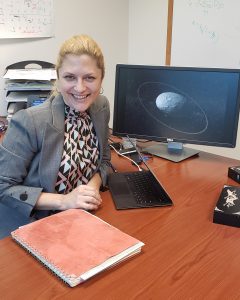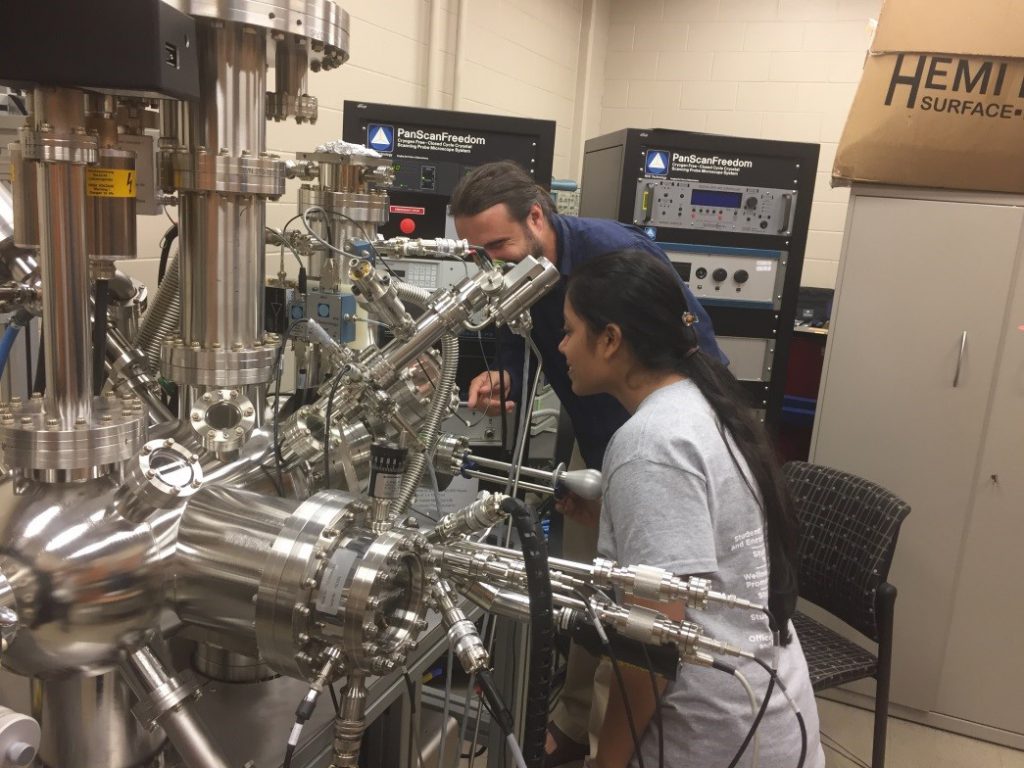Dr. Julie Brisset, research scientist at the Florida Space Institute, was awarded a Solar System Workings grant by NASA to study a potential formation scenario for rings around outer Solar System objects.

Outside of the inner solar system, beyond Neptune, there are bodies called transneptunian objects that contain ices; their composition is different from asteroids found in the inner Solar System, they are very far away, dark and small, and difficult to see from the ground. In 2014, for the first time, a body other than the giant planets of the Solar System was discovered to have rings: a stellar occultation revealed that the centaur 10199 Chariklo is orbited by two narrow rings of water-rich material. Because we can now observe some of these transneptunian bodies, we have discovered that other icy small objects have rings and, with the recent discovery of rings around the Trans-Neptune Object (TNO) Haumea, it could be that rings around small bodies are a common occurrence.
The funded project hypothesizes that the loss of material through surface structural failure could be the origin of Centaur and TNO rings; due to fast rotation, regolith material escapes their surface and is captured as ring material. This project will also attempt to constrain the conditions required for Centaur and TNO ring capture and stability. PI Brisset and her team will use a combination of experimental data analysis, granular material numerical simulations, and ring dynamics simulations to test the hypothesis.
Co-I Dr. David Minton, a planetary scientist and professor at Purdue University, will test injection from the equatorial plane into an orbit that could be a ring, and observe the particles to answer questions such as do the particles build a satellite, do they dissipate, how does the ring evolve, etc. PI Brisset will perform laboratory measurements to determine how the dust and ice grains behave in ring-like environments (does an agglomeration into a satellite occur or not?), particularly in collisions. The first step in the project’s investigation is to integrate the experimentally measured regolith properties into an N-code to simulate avalanches that occur on the low-gravity surface of the centaur/TNO, evaluating overall loss masses and ring particle ejection velocities into orbit. The second step is to use the experimental data on inter-particle collision outcomes in dependence of collision speed and particle properties (e.g. size, shape, water ice content) to determine possible ring evolution scenarios, and which conditions can lead to the rings observed around centaurs/TNOs.
Dr. Estela fernandez-Valenzuela, a post-doctoral research associate at FSI and also part of the awarded team, will provide insight and expertise on TNO rings from ground observations. Her participation in the project will allow for the comparison of the simulation’s results to real, observed small body rings. Experimental measurements and small body surface simulations will be performed at the Florida Space Institute laboratory at the University of Central Florida. Dynamical simulations of ring capture and evolution will be performed at the Department of Earth, Atmospheric, and Planetary Sciences (EAPS) at Purdue University. This project will support a better understanding of the mechanisms driving the generation and evolution of rings around small bodies in the outer parts of the Solar System.


